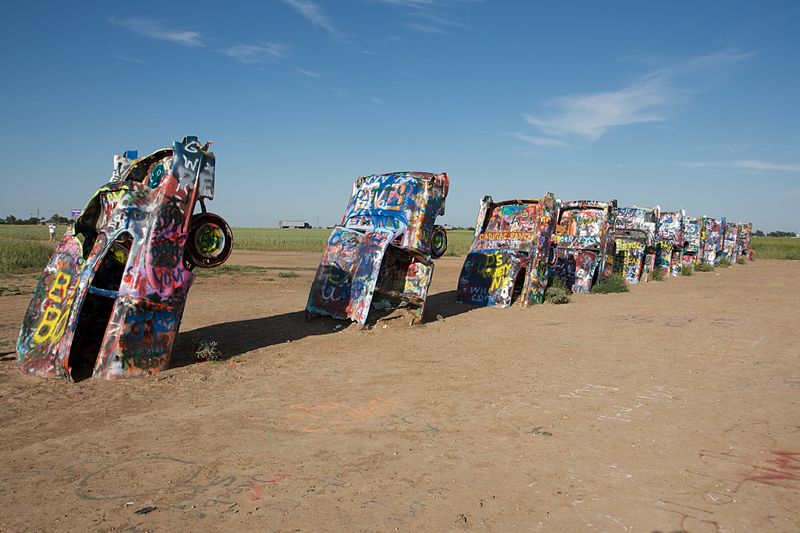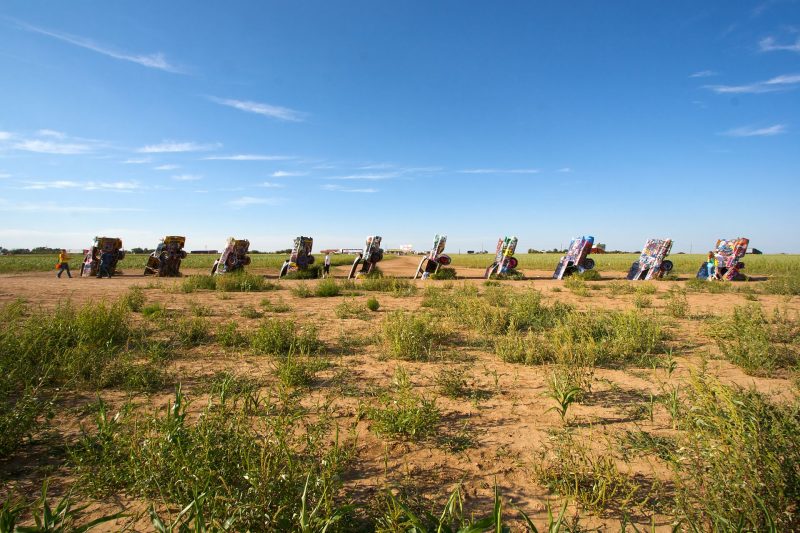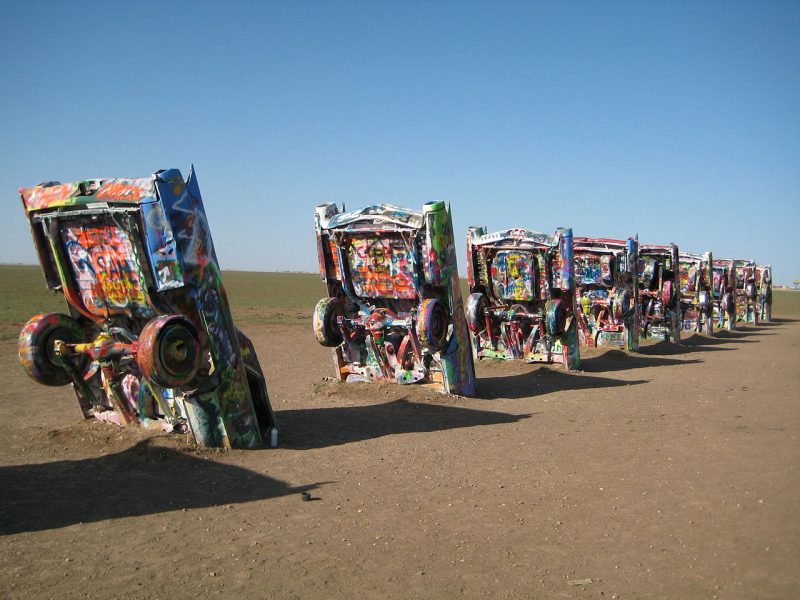The Cadillac Ranch in Amarillo, Texas, USA is not actually a ranch, but a public art installation and sculpture. This piece of art was created in 1974 by Chip Lord, Hudson Marquez and Doug Michels, who were a part of the art group Ant Farm. It consists of what were (when originally installed during 1974) either older working, used, or junk Cadillac automobiles, representing a number of evolutions in the car line (most notably the birth and death of the defining feature of mid-twentieth century Cadillacs: the tailfins) from 1949 to 1963, half-buried nose-first in the ground, at an angle corresponding to that of the Great Pyramid of Giza in Egypt.

Standing along Route 66 west of Amarillo, Texas, Cadillac Ranch was founded and built by a group of artists from San Francisco. They called themselves The Ant Farm, and their silent partner was Amarillo billionaire Stanley Marsh 3. He wanted a piece of public art that would baffle the locals, and they came up with a tribute to the evolution of the Cadillac tail fin. Ten Cadillacs were driven into one of Stanley Marsh 3’s fields, then half-buried, nose-down, in the dirt. They faced west in a line, from the 1949 Club Sedan to the 1963 Sedan de Ville, their tail fins held high for all to see on the empty Texas panhandle.
Chip Lord and Doug Michels were architects and Marquez was an art student at Tulane University in New Orleans, Louisiana.

According to Chip Lord, “Ant Farm was founded as an alternative architectural practice, kind of an experiment in an attempt to subvert normal corporate ways of doing architecture.”
According to Marquez, “Chip and I were living in the mountains north of San Francisco, and there was a book meant for kids left in a bar near where we lived. It was called ‘The Look of Cars,’ and there was something on the rise and fall of the tail fin. I didn’t have a lot to do, so I just sorta drew it up. I’ve always loved the Cadillacs.”
The group claims to have been given a list of eccentric millionaires in 1972 in San Francisco, identifying Stanley Marsh 3 of Amarillo amongst those who might be able to fund one of their projects and submitted it to him. Marsh’s response began:
“It’s going to take me awhile to get used to the idea of the Cadillac Ranch. I’ll answer you by April Fool’s Day. It’s such an irrelevant and silly proposition that I want to give it all my time and attention so I can make a casual judgement of it.”

Cadillac Ranch was originally located in a wheat field, but in 1997, the installation was moved by a local contractor to a location two miles (three kilometers) to the west, to a cow pasture along Interstate 40, in order to place it farther from the limits of the growing city. The Cadillacs are visible from the highway, and though located on private land, visiting it (by driving along a frontage road and entering the pasture by walking through an unlocked gate) is tacitly encouraged. In addition, writing graffiti on or otherwise spray-painting the vehicles is now encouraged, and the vehicles, which have long since lost their original colors, are wildly decorated. The cars are periodically repainted in various colors (once white for the filming of a television commercial, another time pink in honor of Stanley’s wife Wendy’s birthday, and again all 10 cars were painted flat black to mark the passing of Ant Farm artist Doug Michels, or simply to provide a fresh canvas for future visitors).

The cars were briefly “restored” to their original colors by the motel chain Hampton Inn in a public relations sponsored series of Route 66 landmark restoration projects. The new paint jobs and even the plaque commemorating the project only lasted less than 24 hours without fresh graffiti.
Nearly every square inch of each individual car is covered with graffiti.
“Be sure to take your paint spray cans with you,” said one Ant Farm member, “as the purpose of this monument is to let the audience participate in it. You can simply write down your name, or if you have an inspiring message, leave it on one of the cars for the other visitors to read or to erase.”